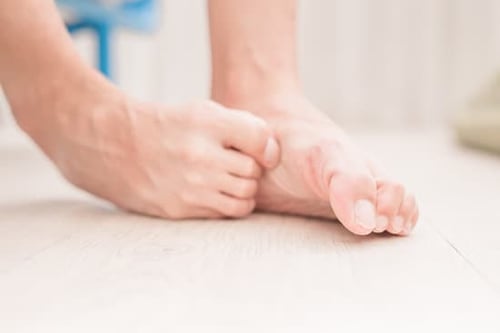
Overview
A hammer toe is a condition in which the toe has an unusual bend in the middle joint. Experts attribute the unevenness to the muscles responsible for holding the toe straight. Also, certain types of shoes, diseases, and trauma on your foot could have a hand in the development of a hammertoe. The ligaments and tendons around this portion of the foot may also be affected.
What Are They?
Hammer toes have a conspicuous bend on the toes’ middle joint. The 2nd, 3rd and 4th toes are the most susceptible. Most patients have a hard time moving the hammer toe due to the excruciating pain that this may cause. A hammer toe can remain flexible for some time, but if no remedy is taken, it may become permanently bent.
Causes
Hammer toes can be caused by a myriad of factors. However, an individual’s foot structure and the shoes one wears are thought to be the primary causative agents. High-heeled shoes, more often than not, deny toes the opportunity to move freely and lie flat. This is also the case for shoes with tight toe boxes. When you eventually remove such shoes, the toes maintain the curled position for some time.
Consistently wearing these shoes will eventually result in hammer toes. You will do yourself a lot of good if you opt for shoes without pointed toes. Laced shoes will also help to reduce the risk as they can be adjusted when you discover that they are causing you discomfort.
Some disease processes are also known to predispose individuals to this condition. Diabetic individuals can easily acquire hammer toes. The possibility is even high if you have arthritis. Excessive trauma on the foot can also have adverse effects including the development of hammer toes. A stub on your toe increases the risk. Advancing age is another risk factor, but with the right shoes, you won’t have so much to worry about.
How to treat them
A change of your footwear will relieve the pain on your hammer toe. More spacious shoes allow toes to maintain their flexibility and remain flat. Changing your shoe inserts may also suffice as they help to reposition your toe. Some exercises geared toward stretching the muscles may be recommended in some cases. Once the pressure on the deformed toe has been taken care of, you can monitor the toe and observe for any further developments.
When to see a doctor
If changing your footwear does not amount to much, then you should consider seeking medical advice. The doctor may recommend surgery to take care of the situation depending on the severity of your hammertoe. A foot examination will help your doctor diagnose the deformity. X-rays are only done when the doctor wants to ascertain the condition of your joints and bones. Don’t wait for things to get out of hand before you seek help.
Buy shoes that fit and in case your foot size changes, visit a shoe repair store to make the necessary adjustments. You could also consider reducing the number of high heels in your possession.







